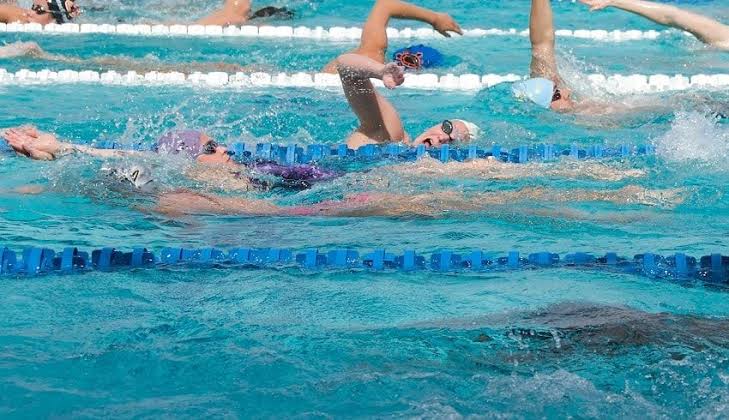Lap Swimmers Release Official Statement Amid Growing Public Interest
May 19, 2025 — By Staff Reporter
In an unprecedented move, the National Coalition of Lap Swimmers (NCLS) issued an official statement on Sunday addressing the growing public fascination—and occasional misconceptions—surrounding the discipline of lap swimming.
“We felt it was time to clarify who we are, what we stand for, and how the world can better understand our place in the aquatic ecosystem,” began the statement, read aloud by spokesperson Maren Schultz during a press conference at the Neptune Aquatic Center in Portland, Oregon.
The press event, attended by a modest yet enthusiastic crowd of swim enthusiasts, journalists, and confused fitness bloggers, marked the first formal address from the tight-knit but often misunderstood community.
A Lifestyle, Not a Leisure Activity
Lap swimmers, those who swim continuous lengths in pools either for fitness, therapy, or competitive training, have long existed at the periphery of the public’s attention. But the recent viral popularity of swimming videos on TikTok and the resurgence of 5 a.m. fitness culture have thrust them into the spotlight.
“People assume we’re just older folks avoiding the gym or that we’re training for the Olympics,” Schultz explained, standing beside a backdrop that read “Straight Lines, Clear Minds.” “But lap swimming is more than laps—it’s rhythm, breathwork, and meditation in motion. We don’t just swim. We glide through routine and resistance alike.”
The statement emphasized that lap swimming is not a fad, but a practice with deep roots and a proud culture. “We have our own etiquette, our own rituals, even our own unwritten laws,” Schultz noted. “If you’ve ever tried to share a lane with someone doing butterfly without warning, you know exactly what I mean.”
The Tenets of the Lane
The NCLS also used the occasion to unveil their “Ten Tenets of the Lane,” a sort of swimmers’ manifesto meant to educate newcomers and foster mutual respect among pool-goers.
Among the tenets:
- Circle swimming is sacred.
- Flip turns are a right, not a privilege.
- Conversations are for the locker room, not the wall.
- Respect the pace of others; lap rage is real.
- Always pee before entering the pool (emphasized thrice).
Social media influencer and self-proclaimed “water yogi” Taylor Jetty was quick to comment on the release, posting: “This is the first aquatic doctrine I can actually align with. Props to the Lap Swimmers Union. Hydration and harmony, baby.”
Addressing Recent Tensions
The statement comes amid subtle tensions in the aquatic community, particularly between lap swimmers and recreational pool users. In recent months, reports of disrupted swim sessions, lane-sharing conflicts, and “kickboard tourists” have surged.
“We understand that public pools are for everyone,” said Schultz, diplomatically. “But we also ask for a baseline of awareness. When someone’s moving like a metronome with goggles that cost more than your rent, maybe don’t cannonball right in front of them.”
NCLS is also advocating for clearer signage in public pools and time slots specifically designated for uninterrupted lap swimming. “We’re not gatekeeping—we’re just asking for some chlorinated peace,” Schultz clarified.
Mental Health and the Power of the Pool
The NCLS statement also addressed the mental health benefits of lap swimming. Citing recent studies linking rhythmic aerobic activity with reduced anxiety and improved mood, the statement called for broader public support for swimming facilities and programs.
“For many of us, the pool isn’t just a workout zone—it’s a sanctuary,” said NCLS member Jonah Li, who credits lap swimming with helping him through pandemic-era burnout. “When the world feels loud, the water is silent.”
As part of their outreach campaign, NCLS announced a new partnership with SwimStrong, a nonprofit that offers swimming lessons and therapy programs for individuals with PTSD, depression, and physical rehabilitation needs.
Looking Ahead
With their statement officially released, the NCLS plans to host a series of town halls, swim-alongs, and “Lap 101” workshops to bring more people into the community—and dispel persistent myths, such as the belief that lap swimmers are antisocial.
“We’re not antisocial,” Schultz laughed. “We just prefer our conversations to be in 50-meter increments.”
The statement concludes on a hopeful note: “To swim is to resist chaos with cadence. In every stroke, we find alignment. We invite the world to meet us—one lap at a time.”
For now, the lap swimmers have spoken—and judging by the number of people digging out their goggles this morning, the world might finally be ready to listen.
